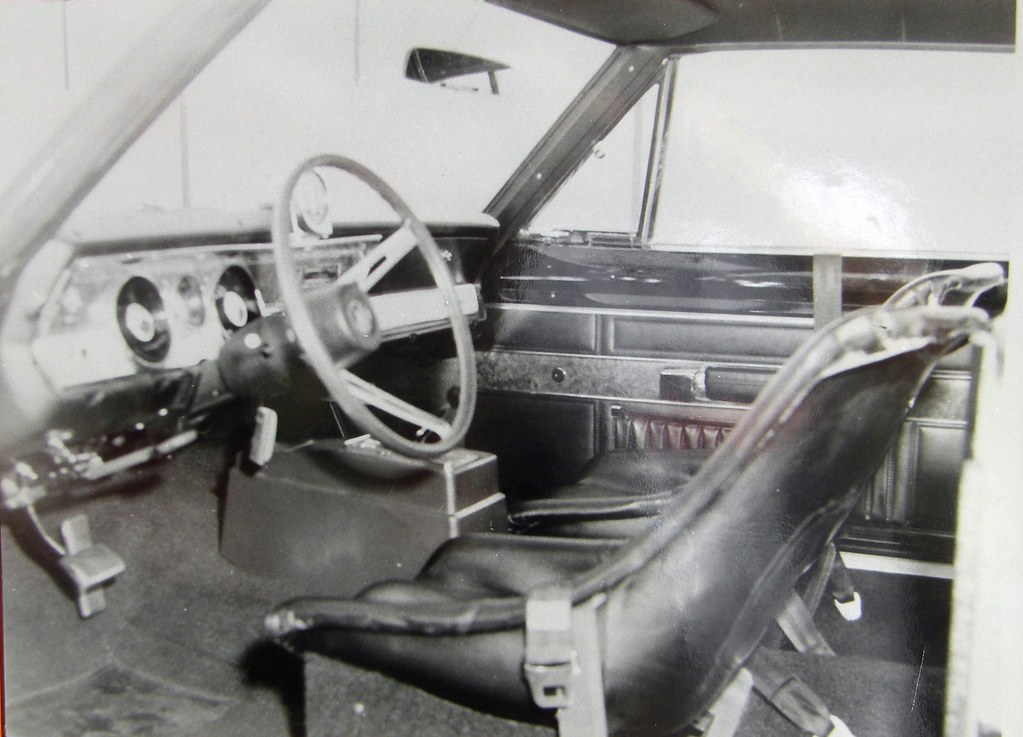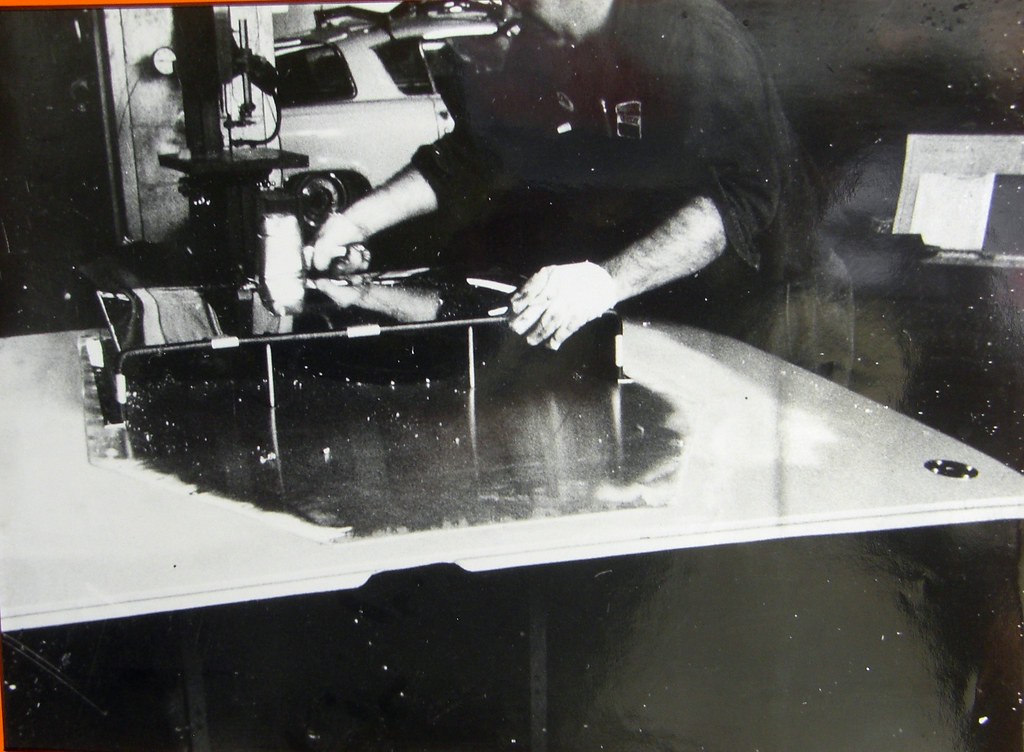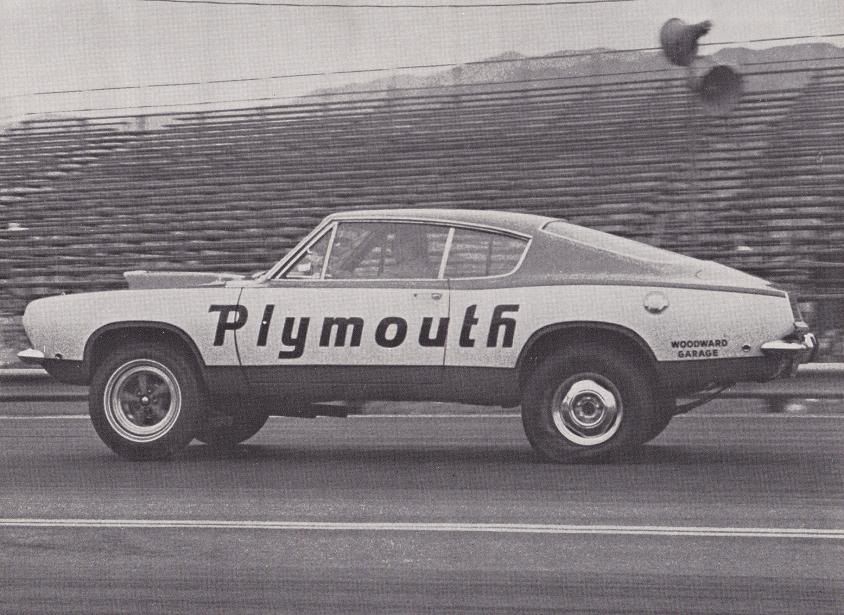famous bob
mopar misfit
:coffee2:My dad raced for Grand Spaulding Dodge along with Norm and others back in the 60's and early 70's and this is a story my dad emailed me the other day and it can shed some light on the issue about the Darts..Enjoy!
The decade of 1960 through 1969 will be illustrated by the 1968 GSS HEMI Dart with a 725 hp 528ci Hemi V8 developed by the Iconic Mr. Norm's of Chicago's Grand Spaulding Dodge fame. Norm Kraus and the Chicago automobile scene have been linked for more than 60 of those 100 years. In 1948 he began his automotive career selling used cars with his brother from a gas station their father Harvey owned, located at the Corner of Grand and Spaulding in Chicago. The famous appellation "Mr Norm" first appeared, due to a space limitation in a newspaper ad selling performance oriented cars. The name stuck and Norm Kraus became "Mr. Norm."
The new Grand Spaulding Dodge showroom and service department was built in 1963. Tying in the performance theme that was established from the onset, the "Mr. Norm's Sport Club" was started and the relationship with youthful performance purchasers was further developed. The first Clayton Chassis Dynamometer was installed in the service department and the dealership began selling "Mr. Norm's" racing apparel. By 1965, Norm teamed up with Gary Dyer and began match racing with a factory altered wheel base Supercharged Hemi Dodge Coronet that changed the course of racing forever, laying the groundwork for what became the professional Funny Car Category.
Mr. Norm developed the first 383 Dart that became the prototype for the factory 383 Dart GTS in 1967. In 1968 Mr. Norm also developed the first 440 Dart GSS that became the prototype for the factory M Code 440 Dart GTS. Mr. Norm also sold the majority of the legendary Hurst/Campbell-built 1968 Hemi Darts. By this time Mr. Norm had well earned the honorary title of the "Hi-Performance King."
Many who grew up in Chicago during the 60's will remember the "Get with the Go Group" jingle on WLS radio, the many "Mr. Norm's" Sport Club social/dances with The Buckinghams as feature music group took place at the dealership, hot summer nights spent hanging out in the Grand Spaulding Dodge dyno bay on South side of Chicago at 3300 West Grand Avenue.
If you are too young to have been in the bleachers to watch the Mr. Norm's Super Charger dominate the factory backed Ramchargers on their home turf at Ubly Dragway in Michigan, you may have still witnessed many "Mr. Norm's" vehicles crashing through Dixie Square Mall or piled up at the intersection of Illinois Routes 12 & 176, in Wauconda, IL in the film the "Blues Brothers". Grand Spaulding Dodge fleet department became so large in 1975 that it supplied many of the Chicago Police Department cars, as well as the Illinois Secretary of State, Department of Transportation and many municipalities. Special orders of police pursuit vehicles equipped with 440 Magnum V8 engines were dyno-tuned for maximum power.
It is particularly fitting that the Mr. Norm's new Hemi GSS Dart has been chosen as the benchmark contribution of the 1960's automotive history at the 100th Anniversary of the Chicago Auto Show. At age 72, Mr. Norm by have already received Hall of Fame Status and at least one Lifetime Achievement Award, but he is hardly content to rest on his laurels. Just like he did in 1968, Mr. Norm is once again revolutionizing the way performance vehicles are created and sold. The vehicle that will be on display is the pre-production prototype of the Limited Edition New GSS Series. These aren't "continuation" or "tribute" cars, this is a new GSS program developed by Mr. Norm and his hand picked team.
Designed to blend the finest 21st century components and technology with classic muscle car style, this is the Hemi Dart that Mr. Norm would have offered in 1968 had the methods and products existed. The Mr. Norm's GSS Hemi Dart exceeds the performance of the original in every category, making it a far superior vehicle. Amongst the notable features is a base 472 cubic-inch HEMI which makes street friendly 610hp on 91 octane pump gas. Each drive-train component, like the transmissions and rear-ends, are dyno tested to withstand up to 850hp to ensure they are able to take to punishment of even the biggest optional Hemi mill. This would be the all-aluminum 572 cubic inch Hemi headed monster which produces a mind bending 825 horsepower, also on everyday 91 unleaded.
Another note worthy aspect of this new GSS is the use of nearly zero body filler. Each of the 40 Limited Edition GSS Darts requires 400 hours of body prep and the use of leading-edge water-jet technology. This process means the body is stripped down to bare metal using a solution treated with a potent rust inhibitor. Each Dart is then painted in sealer, basecoat, intermediate tinted clear, final clearcoat layers, and then baked at 150 degrees for thirty minutes. Once final assembly is complete, each GSS is dyno-tuned, road tested and dialed in so its owner can enjoy hassle free performance. On the day of delivery, Mr. Norm himself will show up and present your new GSS. The customer is still king.
The 1968 GSS HEMI Dart being featured at the 100th Chicago Auto Show signals the return of the Hi-Performance King. The New GSS Dart itself marks the beginning of an entire line of classic GSS Performance Vehicles. Mr. Norm has also teamed up with noted custom vehicle designer Larry Weiner of Performance West Group and respected collectable automobile marketer Patrick Krook of Show Your Auto LLC to offer a limited edition series of 2008 Mr. Norm's Hemi Ram 1500 Super Trucks. The Super Truck promises to be the first of many modern Mr. Norm's Super Cars.
some good info on here, but, you`all are forgetting the 426 street hemi`s were refactored by the nhra to 525 horsepower., a long time ago. a race hemi had much more than that!




















